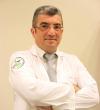Surgical Correction of Severe Sprengel Deformity to Allow Greater Postoperative Range of Shoulder Abduction
Sun, 2014-12-21 16:17 — Alaa Ahmad
Journal Title, Volume, Page:
J Pediatr Orthop.; 30(6):575-81
Year of Publication:
2010
Preferred Abstract (Original):
BACKGROUND:
Although the Sprengel deformity is relatively uncommon, several surgical procedures have been described for its treatment. In this article, we will report the outcome of a certain surgical technique targeted at the management of children with severe Sprengel deformity. The technique aims to increase their postoperative range of shoulder abduction.
METHODS:
We reviewed the results of 15 shoulders operated in 11 patients. The children had severe congenital elevated scapula (9 Cavendish IV and 6 Cavendish III) and were all with less than 90 degrees of preoperative shoulder abduction. The mean age at surgery was 64 months, the mean length of follow-up was 36.5 months, and the mean age at the last examination was 95 months. Surgery included fixation of the upper scapula to the lower thoracic spine. As such, we used a stout suture with lateral displacement of the inferior tip of the scapula and immediate postoperative mobilization with physiotherapy. None of the children underwent clavicular osteotomy. Operative results were evaluated on both functional and cosmetic bases.
RESULTS:
Appearance improved according to the Cavendish scale. Postoperatively, 7 shoulders were graded as Cavendish I and the other 8 as Cavendish II. The range of motion improved significantly by comparing the preoperative and postoperative range of abduction. The mean for postoperative abduction was 139 degrees, with an absolute range of 90 to 170 degrees. Three shoulders had winging of the scapula. There was temporary postoperative upper arm numbness in 1 shoulder. Four patients had a cosmetically unattractive scar because of keloid formation. All families were satisfied with the results (9 very good and 6 good).
CONCLUSIONS:
We have described a procedure for severe Sprengel deformity up to 15 years of age followed by immediate physiotherapy. This procedure not only results in the caudal displacement of the scapula, but it also corrects the scapular and glenoid plane (with limited procedures). Accordingly, it offers an improvement, both functionally and cosmetically.
LEVEL OF EVIDENCE:
Level IV therapeutic study.

